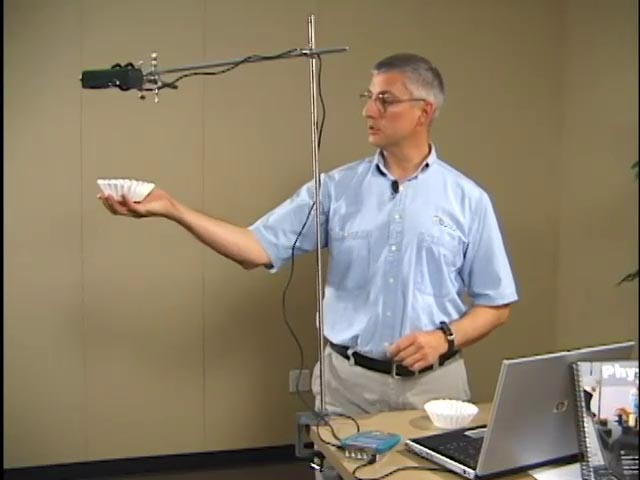In this project, we explore the motion of a badminton shuttlecock and the effect of air resistance on its trajectory. Badminton is a popular sport played worldwide, which involves hitting a shuttlecock back and forth over a net using racquets. The shuttlecock is a lightweight object made up of feathers or synthetic material, and has a conical shape with a rounded bottom. The faster a shuttlecock is hit, the higher it goes and the farther it travels.

To investigate the motion of a shuttlecock, we launched it from a height of 1 meter and recorded its position at various times using a high-speed camera. We then used a mathematical model to describe the shuttlecock's motion with gravity and viscous forces. Gravity causes the shuttlecock to accelerate downwards, while air resistance slows it down.
The air resistance force acting on a shuttlecock is proportional to its velocity squared and to the density of the air. As the shuttlecock moves through the air, it creates a wake and pushes air molecules out of its path. This creates a pressure difference, which results in a drag force that opposes the motion of the shuttlecock.
Our mathematical model shows that the trajectory of the shuttlecock is asymmetric due to the combination of gravity and air resistance. The shuttlecock travels further and faster when hit in one direction than in the opposite direction. This effect is known as the shuttlecock's cork-screw trajectory, and it is caused by the shuttlecock's rotation and the Magnus effect.
The Magnus effect is a phenomenon that occurs when a spinning object moves through a fluid. The rotation of the object creates a pressure difference between the top and bottom surfaces, which generates a lift force perpendicular to the direction of motion. This effect is often used in sports such as tennis, baseball, and golf to control the flight of the ball.
In conclusion, our experiment shows that the motion of a badminton shuttlecock is affected by air resistance, resulting in an asymmetric trajectory. Understanding the physics of shuttlecock motion can help players improve their game by predicting the flight of the shuttlecock and adjusting their shots accordingly. Keywords: Air, Badminton, Shuttlecock.